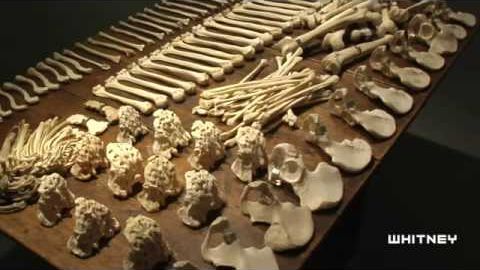
Subtitles & vocabulary
Whitney Focus presents Jenny Holzer: PROTECT PROTECT
00
阿多賓 posted on 2014/01/18Save
Video vocabulary
paint
US /pent/
・
UK /peɪnt/
- Transitive Verb
- To make a picture with colored liquids
- To describe as
- Noun (Countable/Uncountable)
- Colored liquid you apply with a brush
A1TOEIC
More people
US /ˈpipəl/
・
UK /'pi:pl/
- Noun (Countable/Uncountable)
- Persons sharing culture, country, background, etc.
- Men, Women, Children
- Transitive Verb
- To populate; to fill with people.
A1
More house
US /haʊs/
・
UK /haʊs/
- Noun (Countable/Uncountable)
- Place where a specific activity or business occurs
- Building in which a family, person lives
- Transitive Verb
- To give someone a place to live
- To contain or store something
A1TOEIC
More light
US /laɪt/
・
UK /laɪt/
- Transitive Verb
- To cause something to burn; put a burning match to
- To provide a way to see ahead
- Adjective
- Being bright making it easy to see; not dark
- Being pale and lacking darkness of color
A1
More Use Energy
Unlock All Vocabulary
Unlock pronunciation, explanations, and filters
